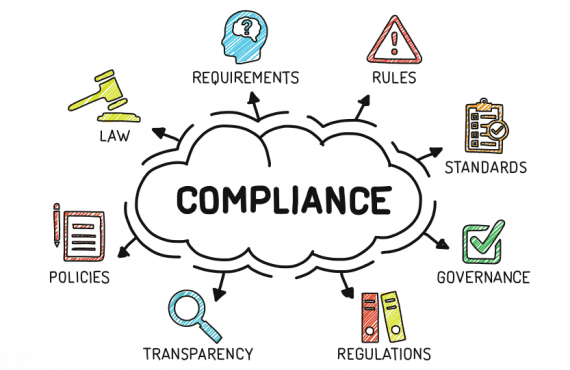Jeannine LeCompte, Compliance Research Specialist
Once a skilled nursing facility has a compliance officer and a compliance committee in place, it can then go about ensuring that there is an efficient compliance program administration structure. The basic element to creating such a program is the implementation of written policies, procedures, and standards of conduct. Understanding what this entails requires a full definition of the concept of “compliance.”
Compliance is best described as a way of operating in which an organization follows internal policies, procedures, and controls designed to prevent and detect violations of applicable law, regulations, and ethical standards, such as fraud, waste, and abuse.
The compliance officer and compliance committee are tasked with creating and ensuring oversight of the corporate compliance program’s administration. This includes the appointment of suitable personnel who oversee components of the compliance program, and the creation of a detailed plan that fits the facility’s needs. In addition, the compliance officer and compliance committee must ensure that there is a suitable communication plan in place which guarantees that all employees are aware of the requirements of the program.
The duties of a compliance officer include the oversight of all reporting and monitoring issues, and the auditing and tracking of processes and procedures relevant to the finances and treatment of residents. A designated compliance officer is responsible for the day-to-day operation of the compliance program and to ensure that the program includes mechanisms for reporting, monitoring, educating, interviewing, auditing, investigating, tracking, updating, and summarizing these activities. The Compliance Officer does not have to perform all these duties personally, but must at least provide oversight so that they are done.
The function of the compliance committee is primarily to work with the compliance officer in making sure that suitable recommendations to management are made with the necessary input from all relevant parties within the organization. This ensures that any recommendations contain a global corporate perspective which are in the interests of the facility, its residents, and employees, and which adheres to the legally mandated requirements of the Department of Human Health and Services (DHSS).
The committee must meet no less than quarterly to review and discuss reports on compliance activities, and can appoint ad hoc members based on their expertise and the issue under review. Attendance is recorded, and a simple majority of members present is a quorum for voting purposes.
Both the compliance officer and compliance committee must ensure that there is a continually updated written plan for corporate compliance activities. They must also maintain a compliance budget, make sure that all members are up-to-date with current regulatory changes, and have an independent reporting structure to the facility’s governing body.
Ultimately, it is the job of the compliance officer and the compliance committee to ensure that there is always a culture of compliance within the organization. They should have suitable incentives, evaluations, and enforcement procedures in place to achieve this aim.

















































